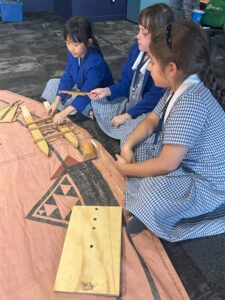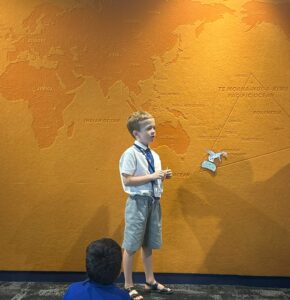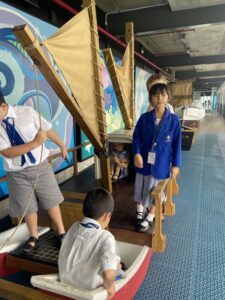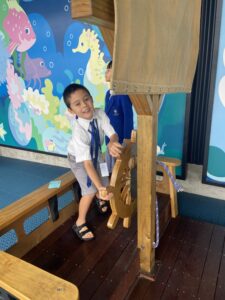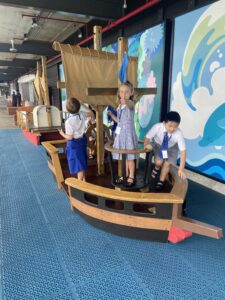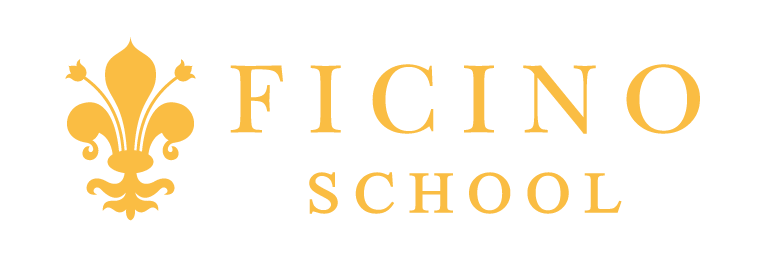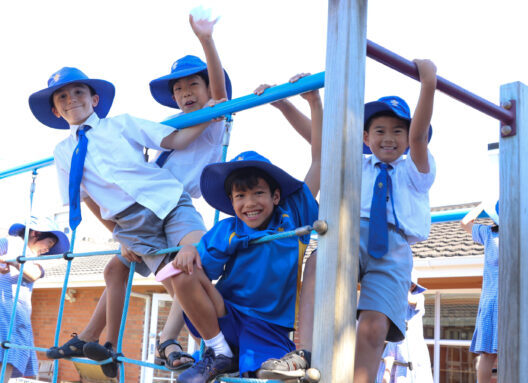It is indeed wondrous to consider how the earliest settlers to New Zealand found our islands given the vast size of the oceans they were traversing. Sailors have navigated by the stars for many hundreds of years and on their recent visit to the Maritime Museum, our Year 3 children learned just how these early travellers mapped out their travels using the star compass. They learned the points of the compass te reo Māori, which made the names of the islands above New Zealand so much clearer. Tonga is the Māori word for ”south”, as the travellers thought it was the furthermost land mass when they encountered it. This makes it logical that Rarotonga translates as “lower south”, given it was found below Tonga.
The children also learned more about the craft these voyageurs travelled on. Waka were essential for Māori travel, trade, exploration, and warfare, both on rivers and along the coast. Our students loved crafting their own waka using the traditional method of creating flax rope to bind sections together.
The highlight of their trip seemed to be watching the firing of the cannon! Cannons came to New Zealand on European naval ships and were quickly adopted by Māori for use in the land wars of the early 19th century. The name “pū repo” (great guns) was very apt as the children all agreed they were ‘really loud’ when they were fired.

